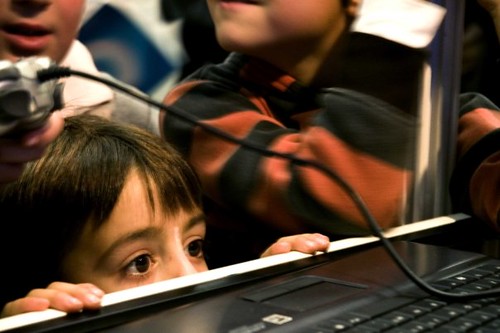Creating Curoius Thinkers
 Curiosity is the key to student success now and in the future. Kids are naturally curious. Set them loose in a room full of craft supplies or a muddy sandbox, and you'll see their imaginations come to life. The following ideas are how to nurture curiosity for the beginning according to Todd Kashdan, author of Curious? Discover the Missing Ingredient to a Fulfilling Life and clinical psychologist and professor psychology at George Mason University. The following are 6 ideas on how to nurture curiosity in the classroom according to an article in Instructor magazine 1020: Although this article was intended for educators, parents can take the same information for nurturing their own children.
Curiosity is the key to student success now and in the future. Kids are naturally curious. Set them loose in a room full of craft supplies or a muddy sandbox, and you'll see their imaginations come to life. The following ideas are how to nurture curiosity for the beginning according to Todd Kashdan, author of Curious? Discover the Missing Ingredient to a Fulfilling Life and clinical psychologist and professor psychology at George Mason University. The following are 6 ideas on how to nurture curiosity in the classroom according to an article in Instructor magazine 1020: Although this article was intended for educators, parents can take the same information for nurturing their own children.1. Cue into students' interest. To enhance a student's curiosity, you must build activities around his/her interest, preferences, and sense of challenge. Focusing on rules, obedience, and inflexibility interferes with curiosity.
2. Satisfy that feeling of competence. Sparking curiosity take more than pointing out that something or someone is interesting, complex, or mysterious. After something new grabs their attention, students need to feel competent and understand it. That can make all the difference in whether they act on their curiosity or find something else to do.
3. Accept the negative and uncertain. Embrace uncertainty. By acting on their curiosity, students can explore this tension instead of trying to hide their feelings. As a result, they become better problem solvers and show a greater willingness to change, even if it requires a great deal of effort.
4. Knowledge opens kids' eyes. If you want students to be curious, help them accumulate knowledge. The more they know, the more they'll want to know.
5. Find the unfamiliar in the familiar. If you think you are an expert, you ma stop paying attention and curiosity can disappear. When you think you basically understand everything about your students' personalities, you start relying heavily on old scripts and categories.
6. Remember that things change. You learn to be curious when you recognize that there are few absolute answers in life. Flexible thinking leads to flexible people. Move away from black-and-white thinking to a greater appreciation of the beautiful gray area between.









0 comments:
Post a Comment